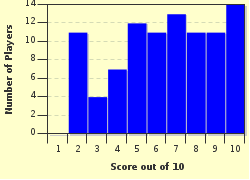Quiz Answer Key and Fun Facts
1. Literally, real analysis means the analysis of real numbers. We often encounter the terms "real numbers" (R), "integers" (Z) and "natural numbers"(N) in real analysis. Here, integers refer to the set of number {..., -2, -1, 0, 1, 2 ...} while natural numbers refer to the set of number {1, 2, 3, ...}. Which of the following statement is true regarding the relationship between these three groups of numbers?
2. The real number system is characterized by three important axioms. Which of the following is NOT one of them?
3. Rational numbers can be expressed as ratio of two integers with repeated or terminating decimals. On the other hand, irrational numbers refer to any real numbers that are not rational. So, is 1 a rational number or an irrational number?
4. The square root of 2 is an irrational number. We can prove this statement by first assuming it is a rational number. By doing some analysis, later we find out that surd 2 is indeed an irrational number. Which method are we using here?
5. Given a non-empty subset S of R (real number) on the interval [0, 5]. Then, any numbers greater than 5 is an upper bound of S since it is greater than all of the numbers contained in S. Therefore, we can say that 5.01, 5.1, 6 and 7 are all upper bounds of S. Among all these upper bound, the one with the smallest value is known as the _______ of S.
6. The absolute value of a real non-zero number r, denoted by |r|, is always _______.
7. A famous theorem states that for any real number r, there exists a unique integer, symbolized by [r], which satisfies the inequality of r - 1 < [r] <= r. If [r]=[1.23], what is the value of r?
8. The product of any 2 consecutive positive integers is a (an) ____ number.
9. The real number system can be extended both ways on the real number line so that it contains negative infinity and positive infinity. Let r be a positive real number. Notice that r + infinity = infinity. Then, r - infinity = negative infinity. Also, r x positive infinity = positive infinity. What is r / positive infinity?
10. The mathematical analysis of real numbers is called real analysis. On the other hand, complex analysis studies the properties of complex numbers.
Source: Author
Matthew_07
This quiz was reviewed by FunTrivia editor
crisw before going online.
Any errors found in FunTrivia content are routinely corrected through our feedback system.


